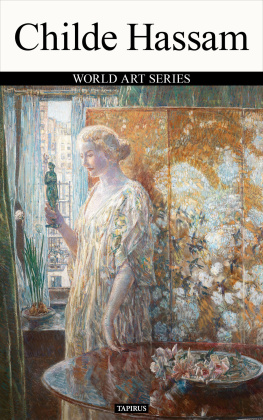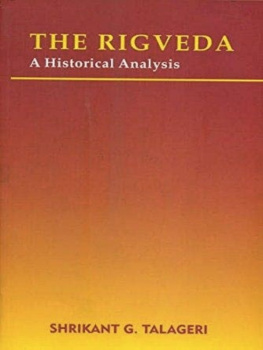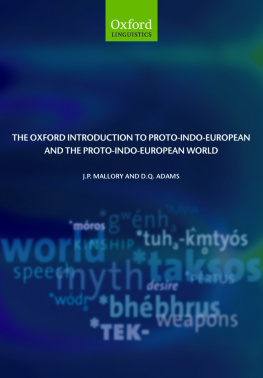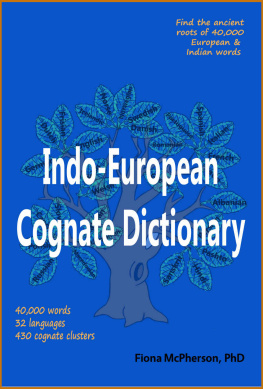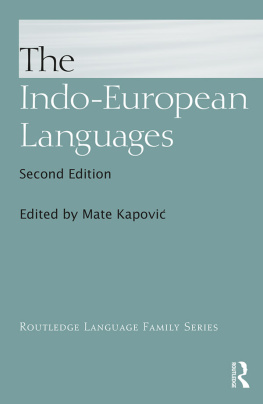THE HISTORY OF CIVILIZATION
THE ARYANS
THE HISTORY OF CIVILIZATION
General Editor C. K. Ogden
The History of Civilization is a landmark in early twentieth Century publishing. The aim of the general editor, C. K. Ogden, was to summarise in one comprehensive synthesis the most recent findings and theories of historians, anthropologists, archaeologists, sociologists and all conscientious students of civilization. The History, which includes titles in the French series LEvolution de lHumanit, was published at a formative time in the development of the social sciences, and during a period of significant historical discoveries.
A list of the titles in the series can be found at the end of this book.
First published in 1926 by Routledge, Trench, Trubner
Reprinted 1996, 2000 by Routledge
2 Park Square, Milton Park,
Abingdon, Oxon, OX14 4RN
&
270 Madison Ave,
New York NY 10016
Transferred to Digital Printing 2008
1996 Routledge
Routledge is an imprint of the Taylor & Francis Group
All rights reserved. No part of this book may be reprinted or utilized in any form or by any means electronic, mechanical, or other means, now known or hereafter invented, including photocopying and recording, in any information storage or retrieval system, without permission in writing from the publishers.
British Cataloguing in Publication Data
ISBN: 0-415-15564-9
ISBN Pre-history (12 volume set): 0-415-15611-4
ISBN History of Civilization (50 volume set): 0-415-14380-2
Publishers Note
The publisher has gone to great lengths to ensure the quality of this reprint but points out that some imperfections in the original may be apparent.
Preface
T HE startling discoveries in the Ancient East and the great progress made in the study of the prehistoric civilizations of Europe, and especially of Greece, seem to make the moment propitious for a fresh survey of the fascinating question as to the origin and diffusion of those languages to which we, in common with the ancient Greeks, Romans, and Hindus, are heirs. In fact, no full discussion of the Aryan question has appeared in English for the last twenty-five years, while during that time the Minoan origins of the pre-Hellenic civilization of Greece, the presence of Aryan rulers in Mesopotamia by the XVth century and of an Indo-European element in the Hittite language have been revealed.
Yet my path is beset with pitfalls. Philologists will at once complain that the term Aryan is unscientific. Of course, I know that only the Indians and Iranians actually designated themselves by this name. But what expression is to be used conventionally to denote the linguistic ancestors of the Celts, Teutons, Romans, Hellenes, and Hindus if Aryan is to be restricted to the Indo-Iranians ? The word Indo-European is clumsy and cannot even claim to be scientific now that Indian Sanskrit is no longer the most easterly member of the linguistic family known. Dr. Giles term, Wiros, is certainly accurate, but, as thus written, it is so ugly that the reviewers have laughed it out of literature. Aryan on the other hand has the advantage of brevity and familiarity. I therefore propose to retain it, quite conventionally, in the traditional sense.
In the second place views on several crucial issues are very much in a state of flux at the moment. They may at any time be revolutionized by the fresh discoveries that are being announced . Without going into technical details, I have tried to summarize the main possibilities and to refer the reader to the chief sources of fuller information.
But the literary evidence from the Ancient East and the gean is still inconclusive. It must be supplemented by archological and anthropological data. Hence in the subsequent chapters, the several traditional theories on the cradle of the Aryans have been re-examined in the light of the new evidence of that kind. But this procedure is peculiarly precarious. Race has different connotations for the physical anthropologist and the philologist. At the same time the correlation between the cultural groups, defined by pottery, tools, and weapons, and ethnic or linguistic groups is always speculative. It is only exceptionally that we find in a given area one culture superseded bodily by another in such a way that only ethnic movements will explain the change, and it is still rarer that the new element can be traced unambiguously to a specific focus. Normally other factors, such as trade and cultural borrowing or mere convergent evolution, have to be taken into account. Conversely a new racial or linguistic element may insinuate itself into a given province without producing any abrupt change in culture. As a science based upon abstraction and comparison, prehistoric archology cannot aspire to the concreteness of history. Hence, while making every possible allowance for such disturbing factors, I have deliberately simplifiedperhaps over-simplifiedmy account of the racial history of Europe and Asia rather than cumber these pages with a mass of technicalities which would still fall short of the complexity of the real.
It has seemed kindest to pass over in silence two theories recently propounded in England and France respectively, since they are so ill-founded that they will not even possess an interest as historical curiosities.
For the photographs illustrating this book, I am indebted to , 2). I must also express my sincerest thanks to Miss M. Joachim for reading the proofs.
V. GORDON CHILDE.
Transliterations
The palatals are represented in Indo-European by , , h. The corresponding sounds in Sanskrit are transcribed, according to the orthography of the J.R.A.S., by c, j, jh and the palatal is written s (pronounced rather like sh).
The Sanskrit linguals are written , h, , h, (pronounced sh) and .
The Sanskrit anusvara, , is derived from final s or r which is, however, sometimes retained for clearness.
In Old Persian is pronounced sh and so in other languages using the cuneiform script and in Zend.
In Gothic the symbol has been retained to express a sound resembling th in then.
In Lithunian sz is pronounced sh ; w stands for v, and j for y ; are nasalized vowels, y the hard i, as in Russian.
The exact differences in pronunciation denoted by the modified letters in Tocharian, t, k, c, etc., is uncertain; they correspond to special letters in the Tocharian texts ; otherwise the orthography of Tocharian follows that adopted for Sanskrit.
THE ARYANS
NEW LIGHT ON INDO-EUROPEAN ORIGINS
Mans progress from savagery to civilization is intimately bound up with the advance of abstract thinking, which enables him to rise above the chaos of particular sensations and to fashion therefrom an ordered cosmos. The growth of reasoning in its turn goes hand in hand with the development of language. The substratum of modern intellectual activities is very largely composed of those syntheses of audile and muscular sensations or images which represent words. These are not only means of communication, but also the vehicles of our abstract ideas. Words are the very stuff of thought. It follows then that a common language does imply a common mental outlook in its speakers; it not only reflects but also conditions ways of thinking peculiar to the users of the tongue in question. Moreover, intellectual progress may to a large extent be measured by the refinement of language. Hence to inherit an exceptionally delicate linguistic structure gives a people a vantage point on the path of progress.



